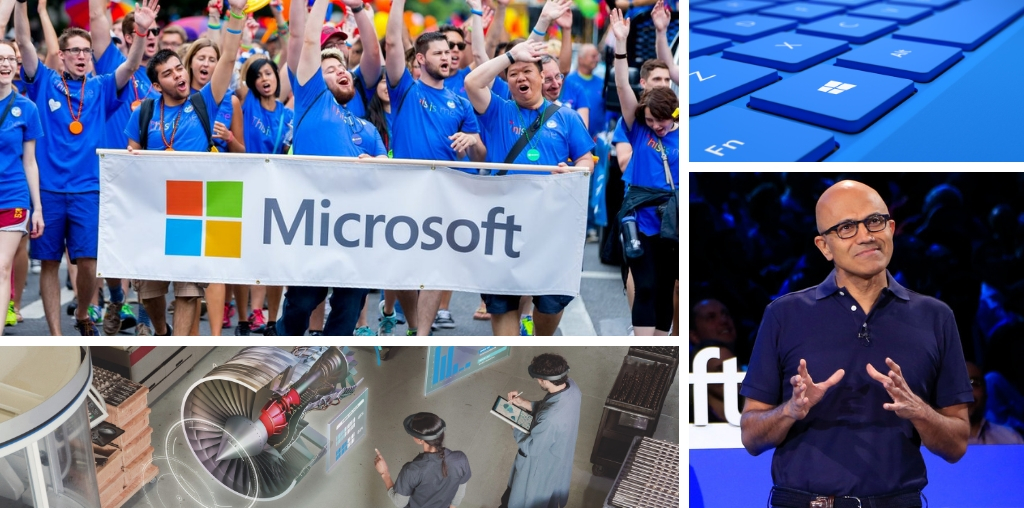How Microsoft reprogrammed its internal culture and started winning again.
Microsoft was in deep trouble. It had lost relevance in an increasingly mobile world dominated by seemingly unstoppable forces Google and Apple. Its acquisition of Nokia was a US$7.6 billion failure. It was reeling from multiple lawsuits and software security breaches.
It was hard to find a positive story about Microsoft, which had once been the byword for personal computing.
[caption id="attachment_2118" align="alignleft" width="300"] Microsoft Australia CMO Pip Arthur[/caption]
Microsoft Australia CMO Pip Arthur[/caption]
How things have changed. Microsoft’s incredible transformation took another step with news it is once again vying with Apple to be the world’s most valuable company. The US stock market valued Microsoft at US$815.8 billion – that’s more than $1.1 trillion in Australian dollars.
Before Satya Nadella took over as Microsoft CEO in February 2014, Microsoft struggled to deal with many issues playing out in public domain. But according to Pip Arthur, Microsoft Australia's CMO, the biggest problem wasn't obvious. Its internal culture needed to change to support the company's unavoidable business transformation.
Speaking at the B2B Marketing Leaders Forum in Melbourne, Arthur explained how Microsoft regained its mojo. It did this on the back of a clearly defined mission statement and a determination to change its corporate behaviours and culture, starting with its employees.
“Our culture had grown to reward ‘know-it-all’ behaviour,” Arthur said. “And I think what happened was that transcended the way we operated externally, too. There was deep recognition that the world was changing fast and we needed to change with it.”
Arthur said Nadella recognised Microsoft “needed to discover who we were, why we were, and what the world would be like without us in it. We needed to rediscover our soul.”
Microsoft proclaimed a new mission statement: to “empower every person and every organisation on the planet to achieve more”.
Looking for purpose
Arthur said the message behind the mission is that Microsoft would stop thinking about itself and start thinking about how customers can reach their potential. “We recognise we're at a unique moment in history,” she said. “A moment that is both thrilling and yet uncertain, where technology has the potential to create digital dividends as much as it does digital divides.
“Much has been discussed about ‘brand value’ and the notion of having a purpose and aligning your business behind it. I agree the easy part is to produce a beautiful noble mission on paper, but it's a different thing all together to put a mission into action.”
Arthur said she sensed things were changing at her company when Microsoft launched Windows 10 in 2015. Rather than presenting the new software in a large American auditorium, Nadella travelled to small Kenyan villages. He spoke to communities and farmers using Microsoft technology for basic internet access to students and teachers or the latest crop prices.
Effective culture change, though, required buy-in from Microsoft’s employees.
“Culture is, by definition, owned by the people who create it – employees,” Arthur said. “Our starting point was to do a lot of listening, a lot of socialising, and really understand from our people how our organisational culture needed to evolve.”
Growth mindset
Nadella was inspired by Stanford University psychologist and author Carol Dweck. Her book, Mindset, promotes the idea that people who develop their talents through hard work, sound strategies and others' input can achieve more than those relying on their innate abilities.
"In [the growth] mindset, the hand you're dealt is just the starting point for development," she writes. "Everyone can change and grow through application and experience."
“What I've seen over the past four or five years is [employees] ultimately become your biggest brand advocates. Never underestimate the power of your people.”
One of the ways the concept works at Microsoft, Arthur said, is by valuing the success of others rather than individuals. “We celebrated risks and we weren't afraid of failure,” she said. “We sought others' perspectives so that we had this always-learning culture.” Now, when Microsoft looks to reward employees, it not only looks at an individual’s contributions but how she has contributed or built on others’ success.
Arthur said the company identified attributes to allow this growth mindset to flourish. It put customers at the centre of everything it did, strived to make a difference, was genuinely diverse and inclusive – right down to the way products were designed – and adopted a "One Microsoft" mentality, breaking down rigid internal silos.
“There were little fiefdoms within the business,” she said. “There was an overwhelming sentiment that to live up to our mission we needed to come together as one Microsoft for our customers.”
Brand reboot
Microsoft set about transforming its culture by changing how it did things. Arthur said it rebooted the brand by adopting “new behaviours, new symbols, new systems and storytelling that brings all of this to life”.
She said it’s impossible to do just one of those things – “one doesn’t work without the others” – and you can’t expect to turn things around quickly or easily. “It's a continuous cycle of learning and adaptation. You can't fake it. Real change must be authentic and meaningful.”
What have Arthur and Microsoft learnt on their path to redemption?
“Change and transformation start with your people, who define your culture,” she said. “What I've seen over the past four or five years is they ultimately become your biggest brand advocates. Never underestimate the power of your people.”
She said culture transformation is hard, and you can't expect to always get it right. "Be humble and stay the course."
Subscribe for free to Marketorium and receive a fortnightly newsletter with the latest knowledge and insights from B2B marketing leaders in the region and across the world. You can also follow us on Twitter, Facebook and LinkedIn.
Further reading: Wrap-up of the first B2B Marketing Leaders Forum in Melbourne


